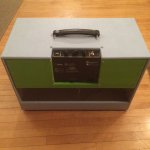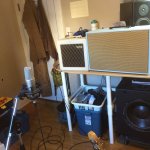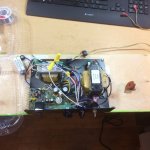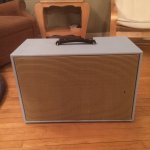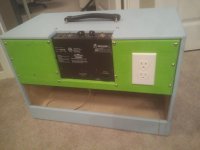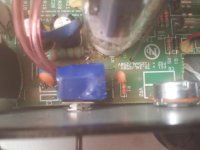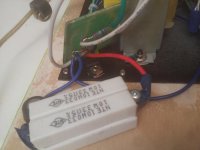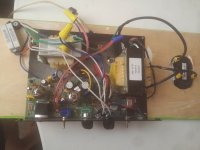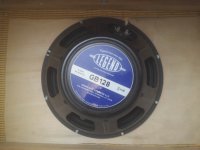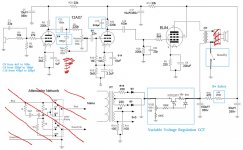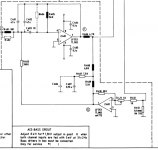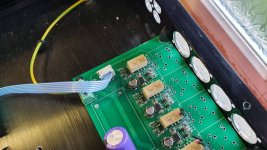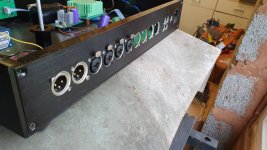Any subject (Audio, 8K Technology, Wildlife, the Humans and the Planet, Wars, History, Science, the Universe, ...) documentary you might have watched recently, you've heard of, you intend to watch soon, on TV, on HBO, on Apple, on Amazon, on PBS, on Netflix, on 4K Blu-ray, on DVD, on anything ... and everything worth mentioning if only just for fun or with a more serious tone, interest, vast space of our galaxy and stars, ... all the jazz in the world since jazz was invented and beyond ... the new jazz.
Articles, videos, trailers, reviews (your's the best), anything that support it or not, anything that you think is advancement for the knowledge, food for the brain, musically, visually, geographically, spiritually, culturally, scientifically, historically, old, new, past, present, future predictions, our planet, the other planets, electric cars, nuclear fusion energy, life after death, death before life, ... is acceptable and permissible, Including docs on building the perfect audio system by yourself.
Docs on music, concert videos, docs on Life, Love and the Blues.
Last night on Netflix I watched this documentary about ...
I recognized a familiar name ... the first mentioned below ...
PEDRO ALMODÓVAR, AGUSTÍN ALMODÓVAR and ESTHER GARCÍA - Executive Producers
Pedro Almodóvar, Agustín Almodóvar and Esther García are Executive Producers of The Silence of Others. Their production company, El Deseo, is known around the world for Pedro Almodóvar’s extensive body of cinema, including such groundbreaking films as Talk To Her and All About My Mother, both of which won Oscars and Golden Globes. Their films have premiered at Cannes, Berlin, San Sebastián, and Venice, and have won multiple Academy Awards, Goyas, BAFTAs, Cesars and European Film Awards.
And because I am familiar with this filmmaker and all his films (almost), it was an easy decision.
Filmed over six years, The Silence of Others reveals the epic struggle of victims of Spain’s 40-year dictatorship under General Franco, as they organize a groundbreaking international lawsuit and fight a “pact of forgetting” around the crimes they suffered. A cautionary tale about fascism and the dangers of forgetting the past.
The doc is only 95 minutes long, with some actual historic footage but the essence is in the faces of present people. Do we forgive, yes, do we forget, no. That's my flexible state of mind in general about life lived and life not lived. There is no one absolute definition about history; usually the victims are searching for a sense of humanity, a way to express their silence, and the perpretrators are looking for absolute silence, to never be unraveled ever.
This is normal, it's human nature @ its deepest, like a coin has two flip sides.
But I believe in the truth through history, I believe in justice if we truly want to live in a better world (or a world in silence). Without justice there is discord. But it's not just about remembering, it's about breaking silence on historical injustices, giving the voice to the victims who suffered in silence their entire lives. That's how we don't commit the same mistakes twice and more.
The visuals (people's facial expressions) tell it all, the cameras capture their silence wanting to escape. ...And everything else built around them.
The music score is delicately and perfectly well chosen. It has the right impactful and human touch.
It's a sad page of history, and one that has to be heard from their victims.
Listening to their silence in humility and respect. Giving them their peace and justice.
I highly recommend. It might not fit everyone's state of mind right now with a pandemic running around but it also might be a temporary antidote. It sure was for me...the people, their story, the music, the cameras following, ...
✒
The Silence of Others - Award winning documentary film
From that link just above ^ click on "About" ... explore.
Even better watch the doc ...
The Silence of Others
YouTube
_____
☆ This is the Documentary Thread ... a place to share, to review, to discuss, to talk about anything everything of interest in the times we are living now.
Cheers,
Bob ... stay safe, play cool, keep calm, be kind ... we're all in it closer to the heavens.





